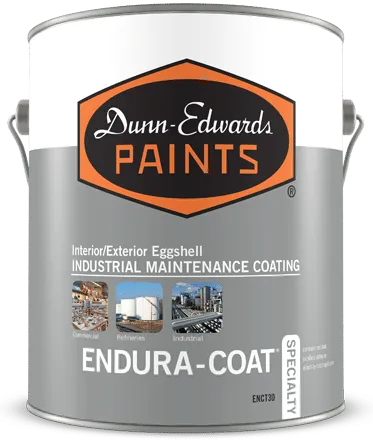The Key to Priming Different Surfaces
07/11/2015 | Dunn Edwards |
Most painters know that one of the keys to a good paint job is priming but understanding all the ins and out of primer — from what and when to prime, to choosing the right product for the job — can be a challenge. So let's take a deeper look at this important coating.
First off, what — exactly — is primer? It is a preparatory coating often applied to substrates before painting that serves a number of purposes such as ensuring better paint adhesion, increasing paint durability and providing additional protection. Primers are problem-solvers that are less like paint and more like glue, as they stick to whatever you're preparing and seal the substrate to ensure a good, uniform finish that will last for years to come.
It's important to note that there are two types of priming. First, spot priming is for small patch areas and minor spaces where peeled paint has been removed. Second is complete priming, which involves over large, bare areas or surfaces that may have dark colors or an uneven sheen.
When to Prime
As a general rule, primer should be used on surfaces that have never been painted, have an uneven appearance or visible stains, as well as areas that have a dark-colored paint that will be covered with a light covered paint or have an unknown covering.
For interior walls, priming is also recommended in the case of wall repairs or remodeling, Regardless of surface type — drywall, plaster, woodwork, etc. — priming ensures the surface is sealed so the finish paint adheres and dries to a smooth, uniform finish.
When it comes to painting exteriors, primer is almost always needed, as these surfaces are constantly subjected to harsh conditions, such as moisture and UV rays. This kind of exposure causes surface deterioration, which makes paint adhesion a challenge. In addition, primers are always recommended when painting surfaces such as wood, masonry and metal. Besides providing good adhesion, primers are designed to deal specifically with common conditions such as efflorescence on masonry or tannin staining on cedar and redwoods.
Be sure to consider your surface type, as some primers are substrate-specific. For example:
New Drywall — Opt for drywall primer because drywall is porous and must be sealed with a sealer or self-priming paint.
Bare Wood — Use a wood primer, as wood contains tannin acids that can bleed through.
Stains — Choose a stain-blocking primer for stains, because it prevents stains from appearing through the topcoat.
Bare Metal — Use a metal primer, especially for ferrous metals, as they need to prevent against rust.
Which Primers Should You Use?
For just about every surface, there is a perfect primer. And, without a doubt, you get a better, more professional-looking paint job when you prime. But how do you choose? While some recommendations are suited for repaint and/or maintenance projects, more careful considerations must be given to primer selection when dealing with paint specifications on new construction projects. Here are some examples regarding how to choose the right primer for your surface:
Interior Stains and Odors — Some stains bleed through most primer and paints no matter how many coats are applied. The same goes for permeating odors like smoke from fires or cigarettes. The best solution is a stain-blocking primer such as BLOCK-IT® Premium.
New Drywall — Mud used on drywall seams absorbs paint differently than the rest of the drywall, which can result in blotchy, dull areas under the paint and an inconsistent sheen. In this situation, the superior option is to use a drywall primer-sealer such as VINYLASTIC® Premium.
New Wood — If your wood isn't seriously stained, a high-quality latex primer or an oil-based primer will fit your needs. If you have wood that is stained or you are painting redwood or cedar, use a stain-blocking primer such as EZ-PRIME® Premium.
Masonry — Use an epoxy-fortified primer, such as EFF-STOP® Premium, to promote excellent adhesion and resistance to efflorescence on porous masonry, including stucco, brick or concrete block.
Concrete Block — Fill a fresh surface with block filler before painting to ensure a smoother finish. If repainting, scrape off any loose or peeling paint and cover with latex paint. Use block filler such as Smooth BLOCFIL™ Premium only if the paint has been completely scraped off.
Metal — If your surface is rusty, remove the rust and apply a corrosion-resistant primer, such as BLOC-RUST® Premium for ferrous metals or GALV-ALUM™ Premium for galvanized metal and aluminum surfaces.
If you have any questions about what primer to use, please contact your local Dunn-Edwards representative.














